In Tinkercad, amplitude definition for Function Generators and scale definition for Oscilloscopes are quite confusing. Here is an ss from Tinkercad's function generator:

On the device 6.20 V is represented as peak-to-peak voltage, look at the red-lines I've marked. But on the panel right-hand-side, we input it as the amplitude, look at the green line I've marked. Which one is true?
And I cannot deduce the answer using an oscilloscope, because there is not enough info about oscilloscope. (At least, I couldn't find enough info.) Here is the input signal from the function generator above:
Answer is not obvious, because the meaning of 10 V placed on y_axis is ambiguous. Is it +/- 10 V as in 20 V in total, i.e. the voltage-per-division is 2 V (first explanation)? Or, is it +/- 5 V as in 10 V in total, i.e. voltage-per-division is 1 V (second explanation)? In some Youtube lectures the explanation is first one. But, I'm not quite sure. Because, if 6.2 V is amplitude and voltage-per-division is 2 V, then this is noncontradictory. But if 6.2 V is peak-to-peak voltage and voltage-per-division is 1 V, then this, too, is noncontradictory. Again, which one is true?
And also, while studying, I've realise that a real life experiment indicates that the second explanation should be true. Let me explain the experiment step by step.
Theory: Full Wave Rectifier Circuits
Assume we apply V_in as the amplitude, the peak-peak voltage is, V_peaktopeak = 2 * V_in. And for output signal we have,
V_out = (V_in - n * V_diode) * R_L / (R_L + r_d),
where n is the number of diode in conduction, V_diode is bias of a diode and R_L is load resistor. Load resistor is choosen big enough so that R_L >> r_d and we get,
V_out = V_in - n * V_diode.
In a real experiment r_d is in between 1 \ohm and 25 \ohm, and we choose R_L on the order of kilo \ohm. Therefore, we can ignore R_L / (R_L + r_d) part, safely.
And for DC voltage corresponding to the output signal we have,
V_DC = 2 * V_out / \pi = 0.637 * V_out.
Sheme of Circuit in an Experiment
Here is circuit scheme,
As you may see, for positive half-periode only two of four diode is in conduction. And for negative half-periode, the other two is in conduction. Thus n is 2 for this circuit. Let's construct this experiment on Tinkercad. I didn't use breadboard to show more similarity between the scheme of circuit and the circuit built in Tinkercad.
Scenerio #1 - Theoretical Expectations
Let's assume 6.2 V to be the amplitude. Then, V_in=6.2 V. And V_peaktopeak is 12.4 V. As output signal we calculate,
V_out = V_in - n * V_diode = 6.2 V - 2 * 0.7 V = 4.8 V.
And for DC equivalent we theoretically get,
V_DC = 0.637 * V_out = 3.06 V.
But in multimeter, we see 1.06 V. This indicates nearly %60 percantage error.
Scenerio #2 - Theoretical Expectations
Let's assume 6.2 V to be the peak-to-peak voltage. Then, V_in=3.1 V. And V_peaktopeak is 6.2 V. As output signal we calculate,
V_out = V_in - n * V_diode = 3.1 V - 2 * 0.7 V = 1.7 V.
And for DC equivalent we theoretically get,
V_DC = 0.637 * V_out = 1.08 V.
And in multimeter, we see 1.06 V. There values are pretty close to each other.
Conclusion
Based on these results, we may conclude that 6.2 V is peak-to-peak voltage, scheme on the function generator is true, the tag "Amplitude" in the description of function generator is wrong and the y-scale of an oscilloscope represents the total voltage half of which is positive and the other half is negative.
BUT
I cannot be sure, and since I'll teach this material in my electronic laboratory class, I really need to be sure about this conclusion. Therefore, here I'm asking you about your opinions, conclusions or maybe other references that I've missed.


